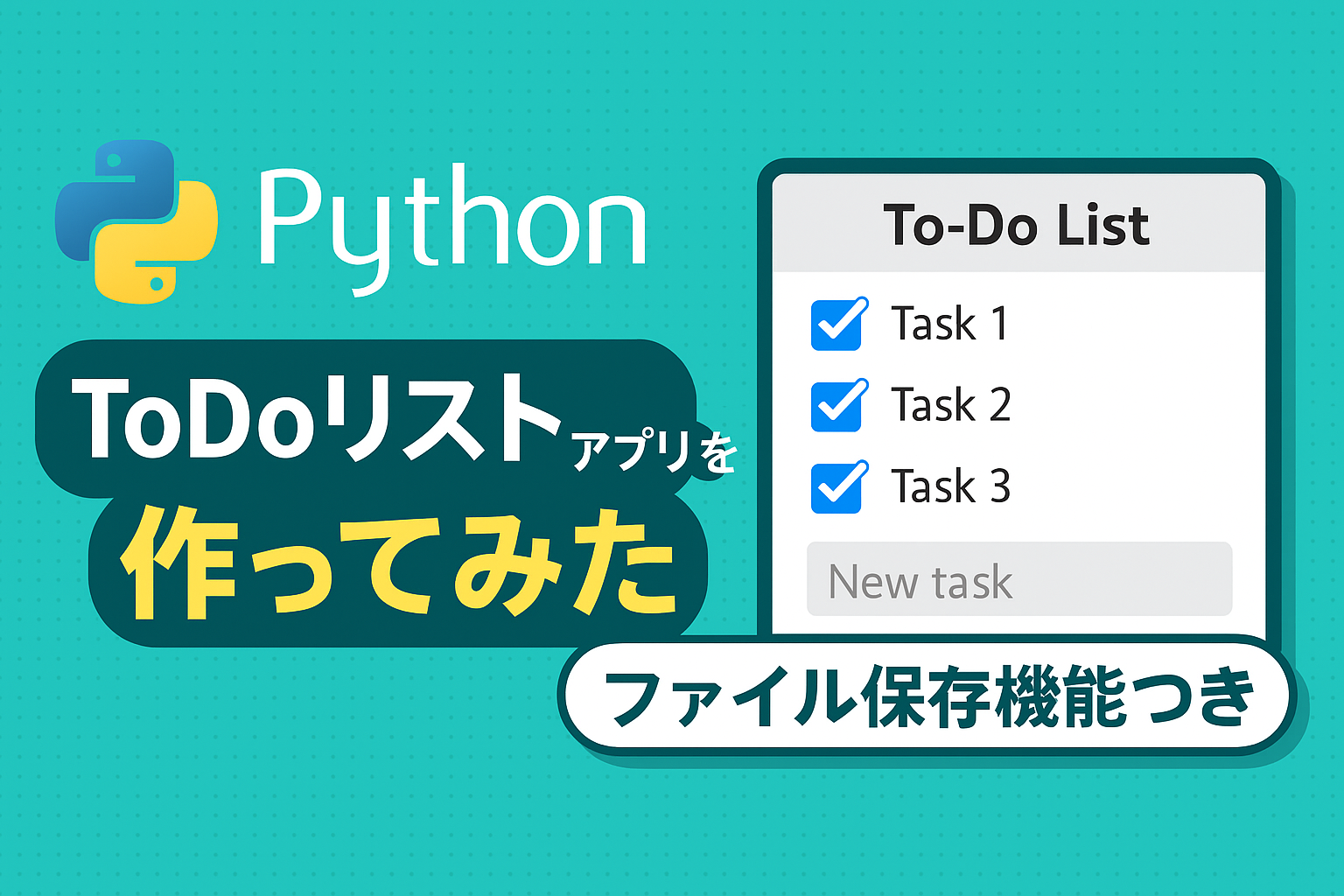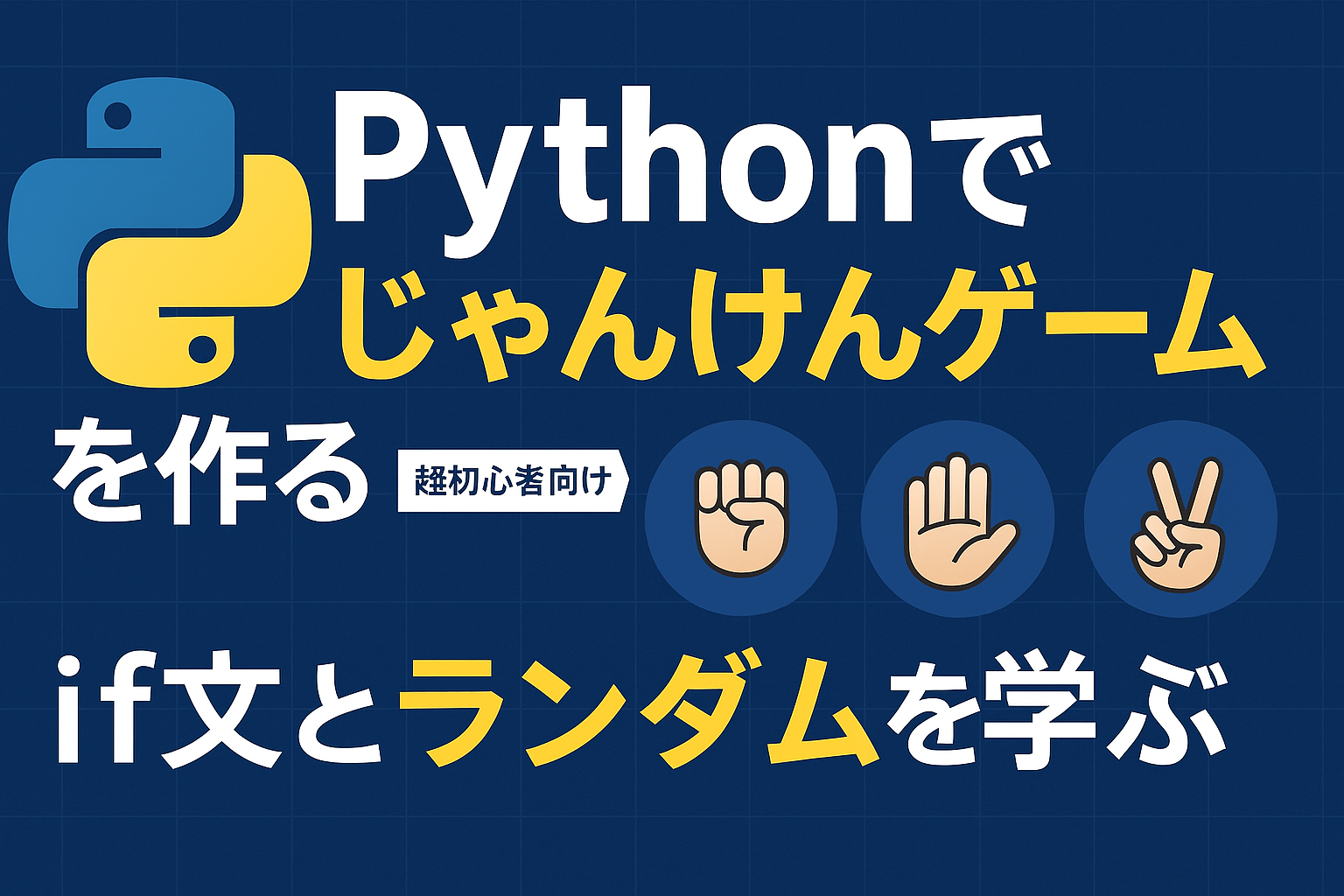"I've started learning Python, but I don't know what kind of app I should make." "I want to make something that's simple and gives me a sense of accomplishment." If you're like that, we recommendTo-do list appis.
This app allows you to add and delete tasks and save them to a file, making it perfect for both study and practical use.
In this article,Carefully explained so that even Python beginners can understandAt the same time, you will actually write code to create a ToDo app.
- Benefits of creating a ToDo app with Python
- Preparations required for creating an app
- Understand the basic structure of a ToDo list
- Write a process to add and display a task
- Implementing the functionality to delete a task
- Adding file saving functionality
- Final code summary
- Let's review what we've learned
- summary
Benefits of creating a ToDo app with Python
conclusion
The ToDo app is a subject that is "simple but has a lot to learn."
There are many skills to learn
• How to use lists and dictionaries
• How to save a file
• Conditional branching (if statement)
• Repetition (for, while)
These are the basics you want to learn first in Python. If you create a to-do list app,Learn by actually moving the deviceSo it will be memorable.
The path to completion is clear
Add, delete, display, and save tasks. Create these four functions in order to complete the task.
The goal is clearThis is also a key point as it makes it less likely that you will give up halfway through.
Preparations required for creating an app
conclusion
All you need is Python and a text editor.
The tools you need are simple
Please prepare the following:
• Python (3.x series)
• A text editor (e.g. VSCode, Sublime Text)
• Command line (Terminal for Mac, PowerShell for Windows)
Learn the basics of file storage
This time we use the open() function to save the data to a file.
This function is a useful tool that can be used to switch between modes such as "write" and "read".
Understand the basic structure of a ToDo list
conclusion
There are only four things to do: add, view, delete, and save.
Manage tasks with lists
1 | = [] |
The basic structure is that tasks are added and removed from a list.
Make user actions optional
1 | : () () () (= () |
In this way,User-choosable interfaceCreating this will make it look like an app.
Write a process to add and display a task
conclusion
Let's add the user's input to a list and display it pretty.
Code to add
1 | = ( |
The task will now be added to the tasks list.
List display code
1 | ) |
Displaying them with numbers makes them easier to delete.
Implementing the functionality to delete a task
conclusion
It would be easier to use if you could delete it by entering the number.
Delete code
1 | = (()) - 1 0 <= : () |
Checking number ranges is essential to prevent mistakes.
Confirmation message after deletion
1 | () ) |
To the userIndicate that it has been deletedlet's.
Adding file saving functionality
conclusion
Using with open() allows you to safely save data.
Save Code Example
1 | (, =+ ) () |
Japanese is also OK if saved in UTF-8.
Processes to load at startup
1 | (, == = [] |
It would be nice to know if it's okay if the file isn't there the first time.
Final code summary
conclusion
Let's put all this together in one place.
1 | = [] |
Let's review what we've learned
conclusion
What I learned in this article
You can learn the basics of Python with this ToDo list.
• How to use input()
• Use lists
• Basics of if and for statements
• File processing with open()
• Saving and loading data
The next arrangement I want to try
• Add a deadline
• Check off completed tasks
• Display in GUI (e.g. tkinter)
summary
Easy to use even for Python beginnersTo-do list appteeth,The best learning material for learning basic grammar and file processing at the same timeis.
Please try running the app and experience the feeling of adding functions with your own hands.
If you want to take it a step further,Python Introduction SeriesTry developing other apps with this app!


